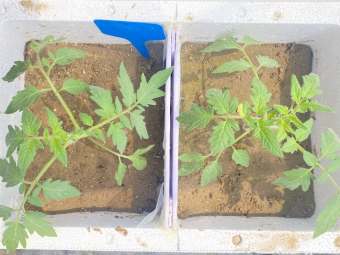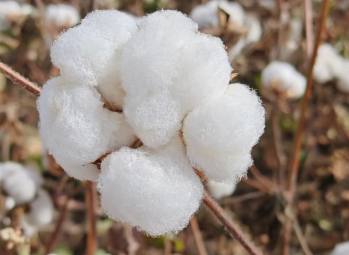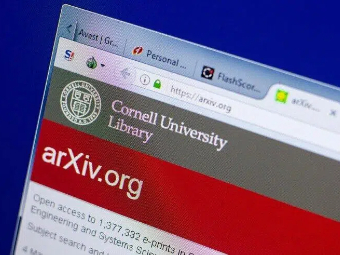|
|
|
|
|
дёҖз§Қдҝғиҝӣдәәзұ»иҜұеҜјеӨҡиғҪе№Із»Ҷиғһеҗ‘й«“ж ёж ·з»ҶиғһеҲҶеҢ–зҡ„ж–°ж–№жі• | Stem Cell Research & Therapy |
|
|
и®әж–Үж ҮйўҳпјҡDifferentiation of human induced pluripotent stem cells into nucleus pulposus-like cells
жңҹеҲҠпјҡStem Cell Research & Therapy
дҪңиҖ…пјҡRuhang Tang, Liufang Jing, Vincent P. Willard, Chia-lung Wu, Farshid Guilak, Jun Chen and Lori A. Setton
еҸ‘иЎЁж—¶й—ҙпјҡ2018/03/09
ж•°еӯ—иҜҶеҲ«з Ғпјҡ10.1186/s13287-018-0797-1
еҺҹж–Үй“ҫжҺҘпјҡhttps://stemcellres.biomedcentral.com/articles/10.1186/s13287-018-0797-1?utm_source=WeChat&utm_medium=Social_media_organic&utm_content=DaiDen-MixedBrand-multijournal-Cell_Biology-China&utm_campaign=ORG_USG_BSCN_DD_Pluripotent_Stem_Cells_Collection
еҫ®дҝЎй“ҫжҺҘпјҡhttps://mp.weixin.qq.com/s/M1olvJjfIDwsGWgWjr0ZYw
еҺҹж–ҮдҪңиҖ…пјҡRuhang Tang, Liufang Jing, Vincent P. Willard, Chia-lung Wu, Farshid Guilak, Jun Chen and Lori A. Setton
жӨҺй—ҙзӣҳпјҲIVDпјүйҖҖеҸҳзҡ„зү№еҫҒжҳҜж—©жңҹй«“ж ёпјҲNPпјүеҢәеҹҹз»Ҷиғһж•°йҮҸеҮҸе°‘пјҢ并дјҙжңүз»ҶиғһеӨ–еҹәиҙЁж”№еҸҳгҖҒж°ҙеҗҲдҪңз”ЁеҮҸе°‘е’ҢиҝӣиЎҢжҖ§йҖҖеҸҳгҖӮеҹәдәҺз»Ҷиғһзҡ„IVDжІ»з–—е·ІжҲҗдёәдёҖдёӘеӨҮеҸ—е…іжіЁзҡ„йўҶеҹҹпјҢжңүз ”з©¶жҠҘе‘ҠдәҶеӨҡз§Қз»ҶиғһжқҘжәҗзҡ„еҶҚз”ҹжҪңиғҪпјҢеҢ…жӢ¬иҮӘдҪ“жҲ–еҗҢз§ҚејӮдҪ“иҪҜйӘЁз»ҶиғһгҖҒеҺҹд»ЈIVDз»Ҷиғһе’Ңе№Із»ҶиғһгҖӮ然иҖҢпјҢеҫҲе°‘жңүж–№жі•е…·еӨҮдҝғиҝӣNPиЎЁеһӢзҡ„жҳҺзЎ®зӯ–з•ҘпјҢдёҖйғЁеҲҶеҺҹеӣ еңЁдәҺеҜ№иҜҘз»Ҷиғһзі»жҳҺзЎ®зҡ„ж Үеҝ—зү©е’ҢеҲҶеҢ–ж–№жі•зҡ„дәҶи§ЈеҚҒеҲҶжңүйҷҗгҖӮ
еҸ‘иЎЁдәҺStem Cell Research & Therapyзҡ„Differentiation of human induced pluripotent stem cells into nucleus pulposus-like cellsдёҖж–ҮдёӯпјҢжқҘиҮӘзҫҺеӣҪеҚҺзӣӣйЎҝеӨ§еӯҰзҡ„Lori A. SettonеҸҠе…¶з ”з©¶еӣўйҳҹејҖеҸ‘дәҶдёҖз§Қж–°зҡ„ж–№жі•пјҢз”ЁдәҺеңЁдҪ“еӨ–е°Ҷдәәзұ»иҜұеҜјеӨҡиғҪе№Із»ҶиғһпјҲhiPSCsпјүжңүж•Ҳең°еҲҶеҢ–жҲҗNPж ·з»ҶиғһгҖӮиҝҷз§ҚеҲҶеҢ–зӯ–з•ҘжәҗдәҺз ”з©¶иҖ…们еҜ№NPз»Ҷиғһзҡ„иғҡиғҺи„Ҡзҙўз»Ҷиғһзі»зҡ„дәҶи§Јд»ҘеҸҠз”ЁдәҺж”ҜжҢҒеҺҹд»Јз»ҶиғһдҪ“еӨ–еҒҘеә·NPз»ҶиғһиЎЁеһӢзҡ„зӯ–з•ҘгҖӮ

еӣҫпјҡжөҒзЁӢи®ҫи®ЎгҖӮзӨәж„Ҹеӣҫеұ•зӨәдәҶжңӘеҲҶеҢ–зҡ„hiPSCеҗ‘NPж ·з»ҶиғһеҲҶеҢ–зҡ„дёүдёӘжӯҘйӘӨгҖӮ
Ruhang Tang et al.
еңЁжңӘеҲҶеҢ–зҡ„hiPSCдёӯпјҢз»Ҷиғһзі»йҖҡиҝҮеҢ–еӯҰжҲҗеҲҶзЎ®е®ҡзҡ„еҹ№е…»еҹәе’ҢиЎҘе……зҡ„з”ҹй•ҝеӣ еӯҗпјҢйҖҗжӯҘеҗ‘дёӯиғҡеұӮе’ҢйҡҸеҗҺзҡ„и„Ҡзҙўи°ұзі»е®ҡеҗ‘еҲҶеҢ–пјҢдҝғиҝӣhiPSCзҡ„NP-еҹәеӣ иЎЁеһӢгҖӮйҮҮз”ЁиҚ§е…үз»ҶиғһжҲҗеғҸжЈҖжөӢжңӘеҲҶеҢ–з»Ҷиғһдёӯзҡ„еӨҡиғҪжҖ§ж Үеҝ—зү©гҖӮеңЁеҲҶеҢ–ж—©жңҹпјҢйҮҮз”ЁRT-PCRжЈҖжөӢжҪңеңЁзҡ„з»Ҷиғһи°ұзі»гҖӮеңЁеҲҶеҢ–з»“жқҹж—¶пјҢйҮҮз”Ёе…Қз–«з»„еҢ–е’Ңз»„з»ҮеӯҰжҹ“иүІжЈҖйӘҢз»Ҷиғһзҡ„NPеҲҶеҢ–гҖӮдёәдәҶеҜҢйӣҶи„ҠзҙўзҘ–з»ҶиғһпјҢдҪҝз”ЁдәҶеҢ…еҗ«иҪ¬еҪ•еӣ еӯҗbrachyuryпјҲTпјүеҗҜеҠЁеӯҗзҡ„жҠҘе‘ҠиҙЁзІ’е’Ңз»ҝиүІиҚ§е…үиӣӢзҷҪпјҲGFPпјүиҚ§е…үзҡ„ж…ўз—…жҜ’иҪ¬еҜјhiPSCsпјҢ然еҗҺйҖҡиҝҮжөҒејҸз»ҶиғһжңҜпјҢеҹәдәҺGFPејәеәҰеҜ№Tзҡ„иЎЁиҫҫиҝӣиЎҢеҲҶйҖүгҖӮ
еҲқе§ӢиҜұеҜјд№ӢеҗҺзҡ„еӣўеқ—еҹ№е…»жңҹиғҪеӨҹдҝғиҝӣж¶ІжіЎеҢ–зҡ„NPз»ҶиғһеҪўжҖҒе’ҢNPиЎЁйқўж Үеҝ—зү©зҡ„иЎЁиҫҫпјҢеҢ…жӢ¬CD24гҖҒLMα5е’ҢBasp1гҖӮе·ІиҜҒе®һдҪҝз”ЁиҚ§е…үжҝҖеҸ‘з»ҶиғһеҲҶйҖүеҜҢйӣҶbrachyuryпјҲTпјүйҳіжҖ§з»ҶиғһеҸҜиҝӣдёҖжӯҘеўһејәNPж ·з»Ҷиғһзҡ„еҲҶеҢ–ж•ҲзҺҮгҖӮ
дәәзұ»iPSCsиғҪжңүж•Ҳең°еҲҶеҢ–дёәNPж ·з»Ҷиғһзҡ„иғҪеҠӣеҸҜд»ҘдёәNPз»Ҷиғһзҡ„еҲҶеҢ–иҝҮзЁӢжҸҗдҫӣж–°зҡ„еҗҜеҸ‘пјҢ并дёәејҖеҸ‘й’ҲеҜ№IVDз–ҫз—…зҡ„ж–°з–—жі•жҸҗдҫӣдәҶз»ҶиғһжқҘжәҗгҖӮ
ж‘ҳиҰҒпјҡ
Background
Intervertebral disc (IVD) degeneration is characterized by an early decrease in cellularity of the nucleus pulposus (NP) region, and associated extracellular matrix changes, reduced hydration, and progressive degeneration. Cell-based IVD therapy has emerged as an area of great interest, with studies reporting regenerative potential for many cell sources, including autologous or allogeneic chondrocytes, primary IVD cells, and stem cells. Few approaches, however, have clear strategies to promote the NP phenotype, in part due to a limited knowledge of the defined markers and differentiation protocols for this lineage. Here, we developed a new protocol for the efficient differentiation of human induced pluripotent stem cells (hiPSCs) into NP-like cells in vitro. This differentiation strategy derives from our knowledge of the embryonic notochordal lineage of NP cells as well as strategies used to support healthy NP cell phenotypes for primary cells in vitro.
Methods
An NP-genic phenotype of hiPSCs was promoted in undifferentiated hiPSCs using a stepwise, directed differentiation toward mesodermal, and subsequently notochordal, lineages via chemically defined medium and growth factor supplementation. Fluorescent cell imaging was used to test for pluripotency markers in undifferentiated cells. RT-PCR was used to test for potential cell lineages at the early stage of differentiation. Cells were checked for NP differentiation using immunohistochemistry and histological staining at the end of differentiation. To enrich notochordal progenitor cells, hiPSCs were transduced using lentivirus containing reporter constructs for transcription factor brachyury (T) promoter and green fluorescent protein (GFP) fluorescence, and then sorted on T expression based on GFP intensity by flow cytometry.
Results
Periods of pellet culture following initial induction were shown to promote the vacuolated NP cell morphology and NP surface marker expression, including CD24, LMα5, and Basp1. Enrichment of brachyury (T) positive cells using fluorescence-activated cell sorting was shown to further enhance the differentiation efficiency of NP-like cells.
Conclusions
The ability to efficiently differentiate human iPSCs toward NP-like cells may provide insights into the processes of NP cell differentiation and provide a cell source for the development of new therapies for IVD diseases.
зӮ№еҮ»еҸ‘зҺ°жӣҙеӨҡеӨҡеҠҹиғҪе№Із»Ҷиғһдё“йўҳи®әж–Ү:
https://www.biomedcentral.com/collections/stemcellreview2018?utm_source=WeChat&utm_medium=Social_media_organic&utm_content=DaiDen-MixedBrand-multijournal-Cell_Biology-China&utm_campaign=ORG_USG_BSCN_DD_Pluripotent_Stem_Cells_Collection
жңҹеҲҠд»Ӣз»Қ:
Stem Cell Research & Therapy(https://stemcellres.biomedcentral.com/about, 4.963 - 2-year Impact Factor, 5.382 - 5-year Impact Factor) is the major forum for translational research into stem cell therapies. An international peer-reviewed journal, it publishes high-quality open access research articles with a special emphasis on basic, translational and clinical research into stem cell therapeutics and regenerative therapies, including animal models and clinical trials. The journal also provides reviews, viewpoints, commentaries, reports and methods.
пјҲжқҘжәҗпјҡ科еӯҰзҪ‘пјү
зү№еҲ«еЈ°жҳҺпјҡжң¬ж–ҮиҪ¬иҪҪд»…д»…жҳҜеҮәдәҺдј ж’ӯдҝЎжҒҜзҡ„йңҖиҰҒпјҢ并дёҚж„Ҹе‘ізқҖд»ЈиЎЁжң¬зҪ‘з«ҷи§ӮзӮ№жҲ–иҜҒе®һе…¶еҶ…е®№зҡ„зңҹе®һжҖ§пјӣеҰӮе…¶д»–еӘ’дҪ“гҖҒзҪ‘з«ҷжҲ–дёӘдәәд»Һжң¬зҪ‘з«ҷиҪ¬иҪҪдҪҝз”ЁпјҢйЎ»дҝқз•ҷжң¬зҪ‘з«ҷжіЁжҳҺзҡ„“жқҘжәҗ”пјҢ并иҮӘиҙҹзүҲжқғзӯүжі•еҫӢиҙЈд»»пјӣдҪңиҖ…еҰӮжһңдёҚеёҢжңӣиў«иҪ¬иҪҪжҲ–иҖ…иҒ”зі»иҪ¬иҪҪзЁҝиҙ№зӯүдәӢе®ңпјҢиҜ·дёҺжҲ‘们жҺҘжҙҪгҖӮ







